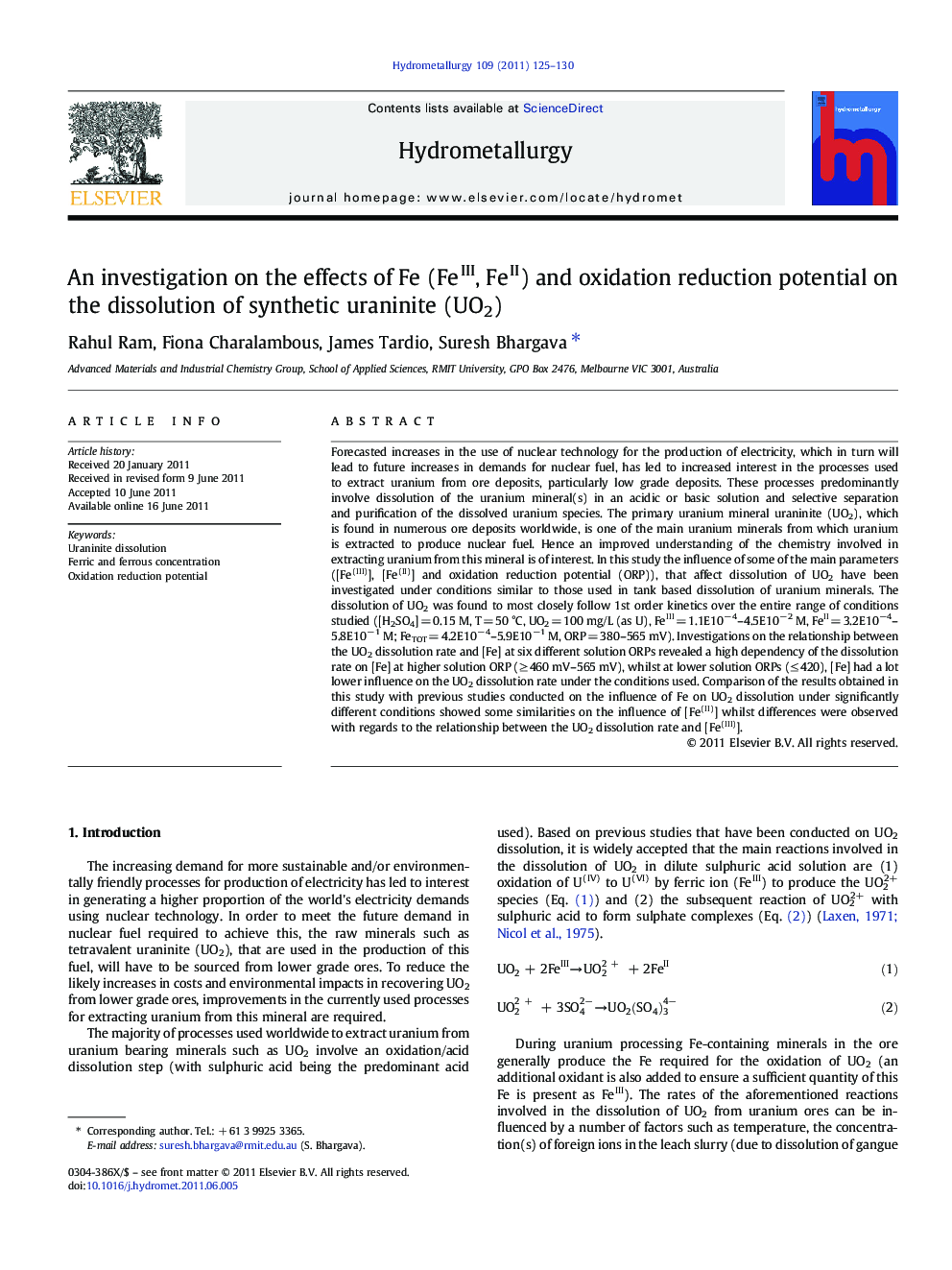| کد مقاله | کد نشریه | سال انتشار | مقاله انگلیسی | نسخه تمام متن |
|---|---|---|---|---|
| 212649 | 462059 | 2011 | 6 صفحه PDF | دانلود رایگان |

Forecasted increases in the use of nuclear technology for the production of electricity, which in turn will lead to future increases in demands for nuclear fuel, has led to increased interest in the processes used to extract uranium from ore deposits, particularly low grade deposits. These processes predominantly involve dissolution of the uranium mineral(s) in an acidic or basic solution and selective separation and purification of the dissolved uranium species. The primary uranium mineral uraninite (UO2), which is found in numerous ore deposits worldwide, is one of the main uranium minerals from which uranium is extracted to produce nuclear fuel. Hence an improved understanding of the chemistry involved in extracting uranium from this mineral is of interest. In this study the influence of some of the main parameters ([Fe(III)], [Fe(II)] and oxidation reduction potential (ORP)), that affect dissolution of UO2 have been investigated under conditions similar to those used in tank based dissolution of uranium minerals. The dissolution of UO2 was found to most closely follow 1st order kinetics over the entire range of conditions studied ([H2SO4] = 0.15 M, T = 50 °C, UO2 = 100 mg/L (as U), FeIII = 1.1E10−4–4.5E10−2 M, FeII = 3.2E10−4–5.8E10−1 M; FeTOT = 4.2E10−4–5.9E10−1 M, ORP = 380–565 mV). Investigations on the relationship between the UO2 dissolution rate and [Fe] at six different solution ORPs revealed a high dependency of the dissolution rate on [Fe] at higher solution ORP (≥ 460 mV–565 mV), whilst at lower solution ORPs (≤ 420), [Fe] had a lot lower influence on the UO2 dissolution rate under the conditions used. Comparison of the results obtained in this study with previous studies conducted on the influence of Fe on UO2 dissolution under significantly different conditions showed some similarities on the influence of [Fe(II)] whilst differences were observed with regards to the relationship between the UO2 dissolution rate and [Fe(III)].
► Effect of [Fe] on UO2 dissolution at six different solution ORPs.
► An abrupt change in the influence of [Fe] on UO2 dissolution between ORPs of 420 mV–460 mV.
► Determination of different regions of dependency of the UO2 dissolution rate on [Fe(II)].
► Direct dependence of UO2 dissolution rate on [Fe(III)] for range of conditions used.
Journal: Hydrometallurgy - Volume 109, Issues 1–2, September 2011, Pages 125–130